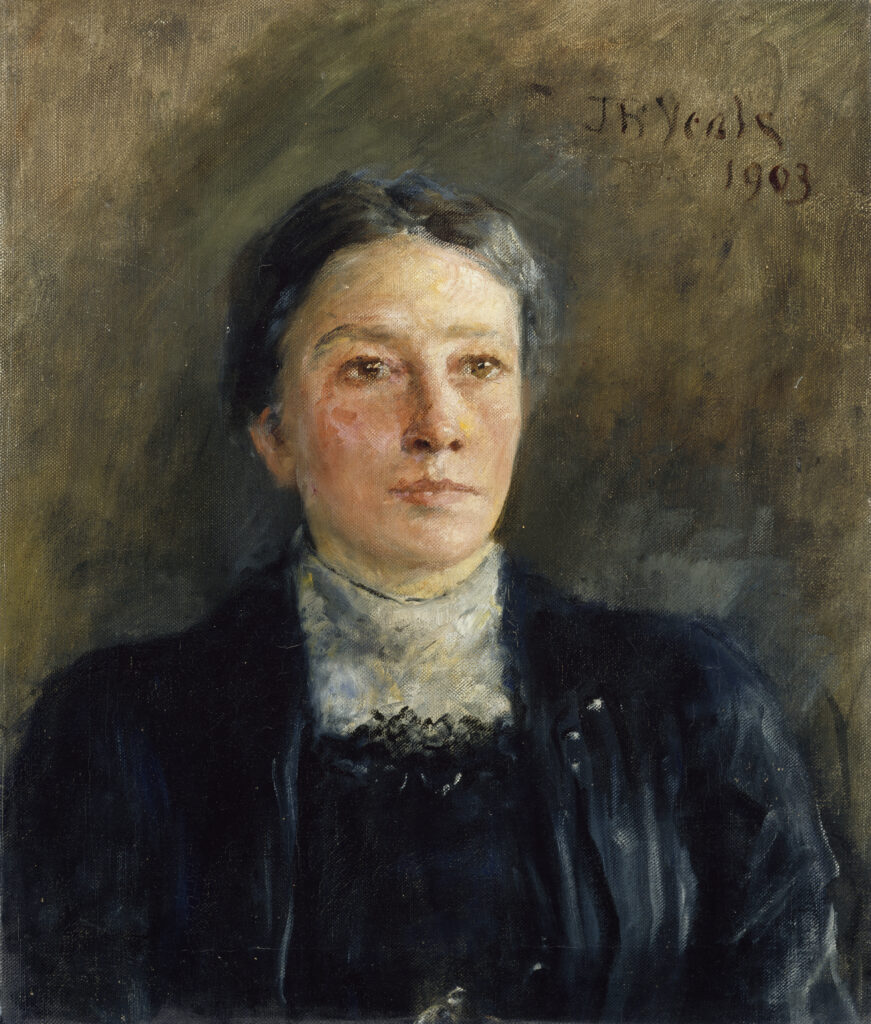Good morning! The Irish Literary Theatre and the Abbey Theatre were (the Abbey still is) cultural icons in Ireland. They were both founded around the turn of the 20th Century when leading Irish writers and playwrights pushed for what’s still known as the Irish Literary Revival. The Irish Literary Theatre was the first; it was based on a Manifesto for Irish Literary Theatre, published in 1897. The theatre was founded two years later.
The Manifesto, and the theatre, were founded by three of the most prominent writers in Ireland at the time: William Butler Yeats, Edward Martyn, and Isabella Augusta Persse (known now as Lady Gregory), who was born March 15, 1852 in County Galway in Ireland. She was born into a wealthy family, on an 6,000 acre estate called Roxborough. She was educated at home, and her nanny, Mary Sheridan, was a native Irish speaker who introduced Isabella to the folklore and history of the area.
Isabella Persse became Lady Gregory when she married Sir William Gregory, who was 36 years older. They were both firmly entrenched in the wealthy elite, and spent time in their estate in Ireland as well as their large house in London. Sir William was a patron of the arts and the couple hosted salons every week in whichever location they happened to be staying at. Their salons were the place to be if you were anybody in the literary elite of the United Kingdom; Robert Browning, Lord Tennyson, and Henry James frequently attended.
The Gregorys had one child, Robert, who became a pilot in World War I. He was shot down and killed, and memorialized by W.B. Yeats in three poems: An Irish Airman Foresees His Death, In Memory of Major Robert Gregory, and Shepherd and Goatherd.
Lady Gregory began publishing her work under her own name around 1882. At first she published political pamphlets, mostly critical of the current British government. She also began publishing short stories, but under the pen name Angus Grey. She wrote a series of memoirs about her childhood, but they weren’t published until 2013.
Sir William Gregory died in 1892, and Lady Gregory moved to their Irish estate and worked on editing his autobiography, which she published in 1894. She rekindled her interest in Irish folklore and language, and hired several local tutors to learn more. That led to a series of volumes she wrote and published from about 1900 to 1910. Yeats wrote the introduction to her Cuchulain of Muirthemne and called it “the best that has come out of Ireland in my time.” (Cuchulain is a mythical Irish hero like Hercules or Gilgamesh.)
She worked with Yeats and Edward Martyn (who was a neighbor) on the Irish Literary Theatre during the 1890s, and when it closed in 1901 from lack of funding, worked with a larger group to found the Irish National Theatre Society. That group began staging plays in the Hibernian Theatre of Varieties, which was on Abbey Street in Dublin. Then an adjacent building became available and they bought it, calling it the Abbey Theatre, which is still in operation. Some of her own plays were performed there.
She began to write for the BBC radio in the 1920s, and wrote more than 19 more plays up until 1928, when she retired. She had stayed active in the Abbey Theatre as well, and even acted, playing the lead in at least one play. George Bernard Shaw called Lady Gregory “the greatest living Irishwoman,” but after her death in 1932 (she was 80), her literary reputation dropped. Her plays are hardly ever performed any more, and although her works on Irish mythology are still sometimes consulted, modern translators discovered that she had glossed over some of the aspects of the stories that might have bothered Victorian readers.
The New York Public Library held an exhibition in 2019, All This Mine Alone: Lady Gregory and the Irish Literary Revival. Trinity College Dublin commissioned a bust of Lady Gregory in 2020, and she was the subject of a 2023 documentary: Lady Gregory, Ireland’s First Social Influencer.

Portrait of Lady Gregory by John Butler Yeats in 1903
